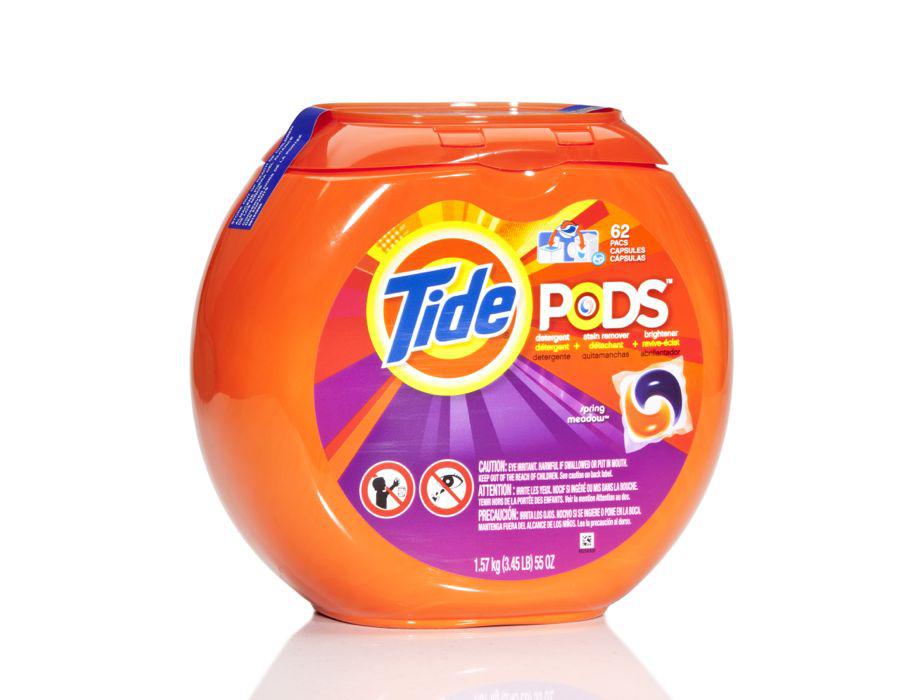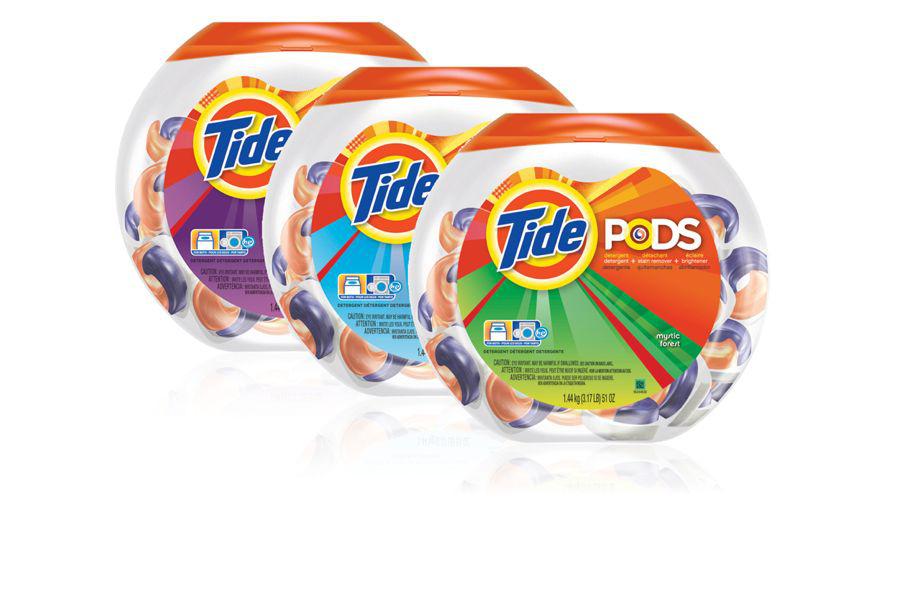Detergent pods are a modern convenience that has made doing the laundry less daunting for those who dislike measuring, any sort of mess, or lugging heavy detergent containers to the laundromat.
The handy little pods are designed to hold concentrated doses of detergent in film shells that dissolve quickly in water of any temperature. Like tea bags or espresso pods, they make life a little more streamlined. And they alleviate eco-guilt by dissolving without a trace.
But the exact qualities that make the pods a design innovation for adults render them little bombs of potential risk for children. Detergent pods were launched in the United States in 2010. According to the American Association of Poison Control Centers, 6,724 children under the age of 5 were exposed to single-load laundry packets through August of this year. That’s up from reports in 2012.
Children were swallowing laundry detergent long before the advent of pods, often with few or no adverse effects. But the highly concentrated formula used in pods leads to more severe symptoms such as vomiting and respiratory problems and in at least one case fatal consequences: Last month a 7-month-old baby in Florida died after ingesting one of the pods while his mother was in another room.
Most detergent pods are little rectangular packets in the shades of green or blue, small enough to fit in a child’s hand, squishy in a way that might make them appear like a toy. Procter & Gamble’s Tide Pods feature a round, swrily, white-orange-and-purple design that makes its laundry pods look unmistakably like candy. Even the transparent jar packaging (above) made them look like bonbons that belonged on a sweet shop shelf.
It’s impossible to know whether Tide’s candy-like design has made its pods particularly appealing to tots; the AAPCC has received complaints concerning multiple brands. However, in response to concerns about accidental ingestion, in July P&G made changes to its packaging, adding a double safety latch, turning its transparent pod container opaque and removing the peekaboo window from its sleeve pack. Costco followed its lead in August by switching to opaque packaging for its own brand of candy-like laundry detergent pods. P&G also made warning labels more visible and stepped up its home safety education efforts.

Photo courtesy of Business Wire
It is good that P&G recognizes design can play a role in minimizing the risk, here. An email to the company wasn’t returned by press time, so it’s not clear whether it had evidence suggesting that the clear container—or the trompe l’oeil candy design of the pods—was especially attractive to children.
But is redesigning the packaging really the ultimate solution? It seems that individually packaged detergent morsels will inevitably pose a risk in households with young children, who are known to put pretty much anything in their mouths. Does it make sense to tempt fate by sticking with the detergent-as-candy design?
